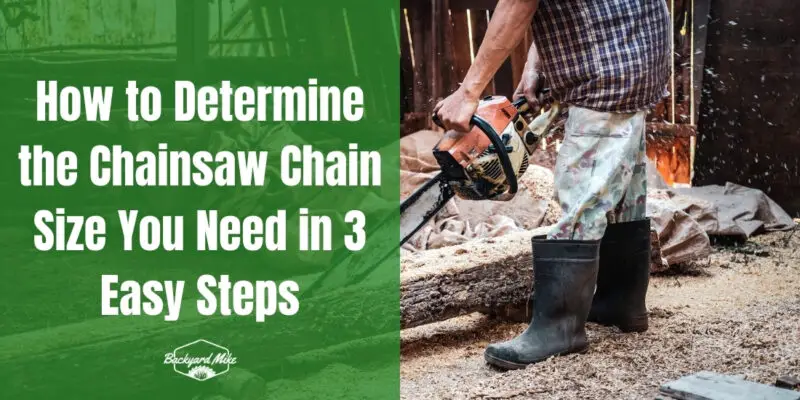To find the right chainsaw chain size, first, check your chainsaw manual and bar inscriptions for specs on chain types. Next, measure the pitch by finding the distance between three rivets and dividing by two, and gauge using a caliper for thickness of drive links. Finally, count the drive links and verify the chain matches the bar and sprocket size for compatibility. Explore further for more detailed insights into chain selection and maintenance.
Key Takeaways
- Check the chainsaw manual and bar inscription for chain specifications like pitch, gauge, and number of drive links.
- Measure the pitch by dividing the distance between three consecutive rivets by two for accurate sizing.
- Use a caliper to measure the drive link thickness to determine the chain gauge.
- Count the drive links to ensure the chain length matches your chainsaw bar.
- Ensure the chain's pitch and gauge are compatible with the bar and sprocket for safe operation.
Check the Chainsaw Manual and Bar Inscription
When determining the appropriate size for your chainsaw chain, start by checking the chainsaw manual and the bar inscription. These resources are essential for effective chainsaw maintenance. Your manual contains detailed specifications about chain types, guaranteeing a proper fit. Look for the pitch, gauge, and number of drive links specified. The bar inscription, usually near the chainsaw body, often provides chain size information directly. Keep an eye out for any stampings on the bar or chain that indicate size or type. If the information isn't clear, contacting the manufacturer or consulting their support can help. Understanding these details guarantees your chain is compatible with your chainsaw, promoting efficient operation and extending the life of your equipment. Investing in chainsaws with safety features is more cost-effective than potential hospital bills. Drive links are teeth on the bottom of the chain that slot into the groove of the bar and run around the sprocket.
Measure the Pitch, Gauge, and Drive Links
To accurately measure the pitch, gauge, and drive links of your chainsaw chain, follow these straightforward steps. Start with pitch measurement techniques: find the distance between three consecutive rivets, then divide by two. This gives you the pitch, vital for matching the bar and sprocket. Common pitches are 0.325", 3/8", and 0.404". Next, focus on gauge selection tips. Use a caliper to measure the thickness of the drive links within the bar groove. Typical gauges include 0.043, 0.050, 0.058, and 0.063 inches. Additionally, mismatched gauges can lead to chain slippage or damage, so accuracy is crucial. Consider the importance of selecting the right chain for both performance and safety when measuring and choosing your chainsaw chain specifications. Finally, calculate the number of drive links by counting each one carefully. Begin at a specific link to maintain accuracy. These steps guarantee your chainsaw operates smoothly, creating a sense of belonging with your equipment.
Ensure Chain Compatibility With Bar Size and Sprocket
Before you start using your chainsaw, confirming chain compatibility with the bar size and sprocket is vital for ideal performance.
First, match the chain gauge to the bar groove to prevent excessive wear and guarantee efficient chain maintenance. Consider the bar length, as different lengths require specific chain skipping patterns. Remember, the bar material can affect how the chain interacts, impacting durability. To ensure proper chain length measurement, count the drive links, as this determines the overall chain length and helps in selecting the right replacement. A properly maintained chainsaw chain ensures safe operation and reduces the risk of accidents.
Match the chain gauge to the bar groove to prevent wear and ensure efficient maintenance.
For sprocket alignment, the sprocket nose should match the chain pitch, assuring proper meshing. Correct chain tension is essential for smooth operation and extending lifespan.
Choose the appropriate chain type, whether aggressive or smooth, to match your bar and sprocket setup. Regularly check for wear and use manufacturer charts for the right fit, enhancing efficiency and longevity.
Frequently Asked Questions
How Do I Know if My Chain Is Too Aggressive for My Cutting Needs?
Is your chain roaring more like a lion than a purring kitten? Evaluate chain aggressiveness by matching it to your cutting needs. Consider motor power, wood type, and your experience to guarantee you're not out of your depth.
What Are the Benefits of Low Kickback Chains for Beginners?
You'll appreciate low kickback chains for their safety features, enhancing user experience. They're perfect for beginners, providing a sense of belonging in the community of users who value safety. Enjoy smoother cuts and stable operation with ease.
How Can I Tell if My Chain Is Corrosion-Resistant?
You can tell if your chain is corrosion-resistant by checking manufacturer labels, looking for specialized coatings, and reading product reviews. Regular chain maintenance and proper corrosion prevention techniques will guarantee your chainsaw performs well and lasts longer.
Which Chain Materials Are Best for Cutting Tougher Woods?
You might think stainless steel is enough, but for cutting tougher woods, carbide chains truly shine. They offer durability and efficiency, making you feel part of the expert crowd. Join them in choosing the best for challenging tasks.
What Should I Do if My Chainsaw Chain Keeps Rusting?
If your chainsaw chain keeps rusting, focus on rust prevention through regular chain maintenance. Clean and lubricate your chain after each use, store it in a dry place, and apply bar and chain oil consistently.
Conclusion
Just like piecing together a puzzle, determining your chainsaw chain size requires careful attention to detail. Start by consulting your chainsaw manual and checking the bar inscription to reveal essential information. Then, measure the pitch, gauge, and drive links with precision, guaranteeing each element aligns perfectly. Finally, confirm that the chain is compatible with both the bar size and sprocket. By following these steps, you'll make certain your chainsaw runs smoothly and efficiently, ready to tackle any task.


